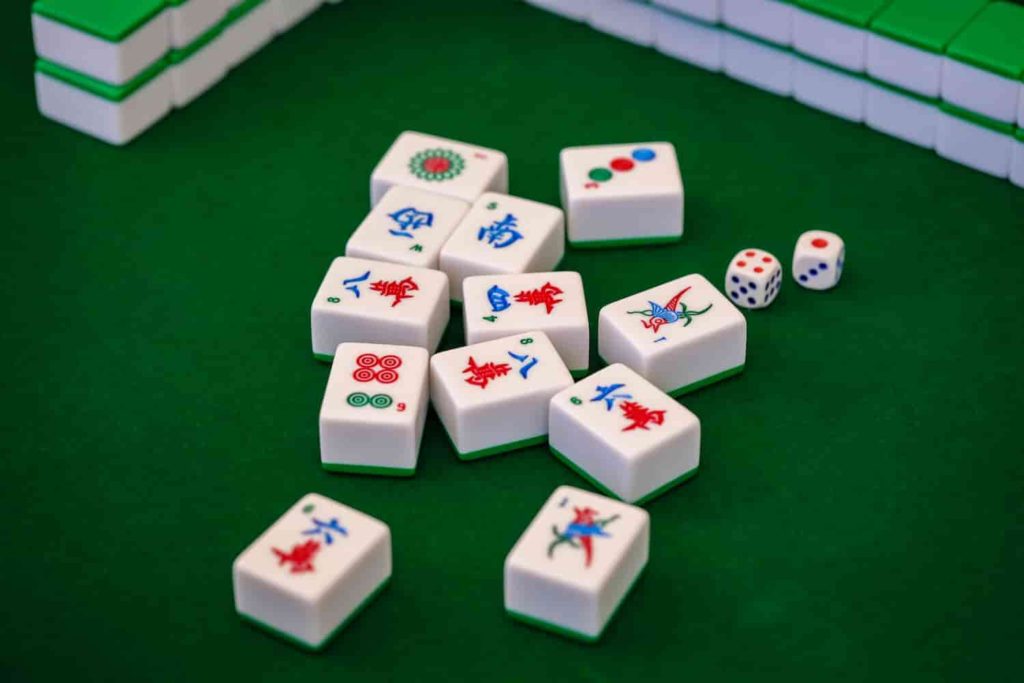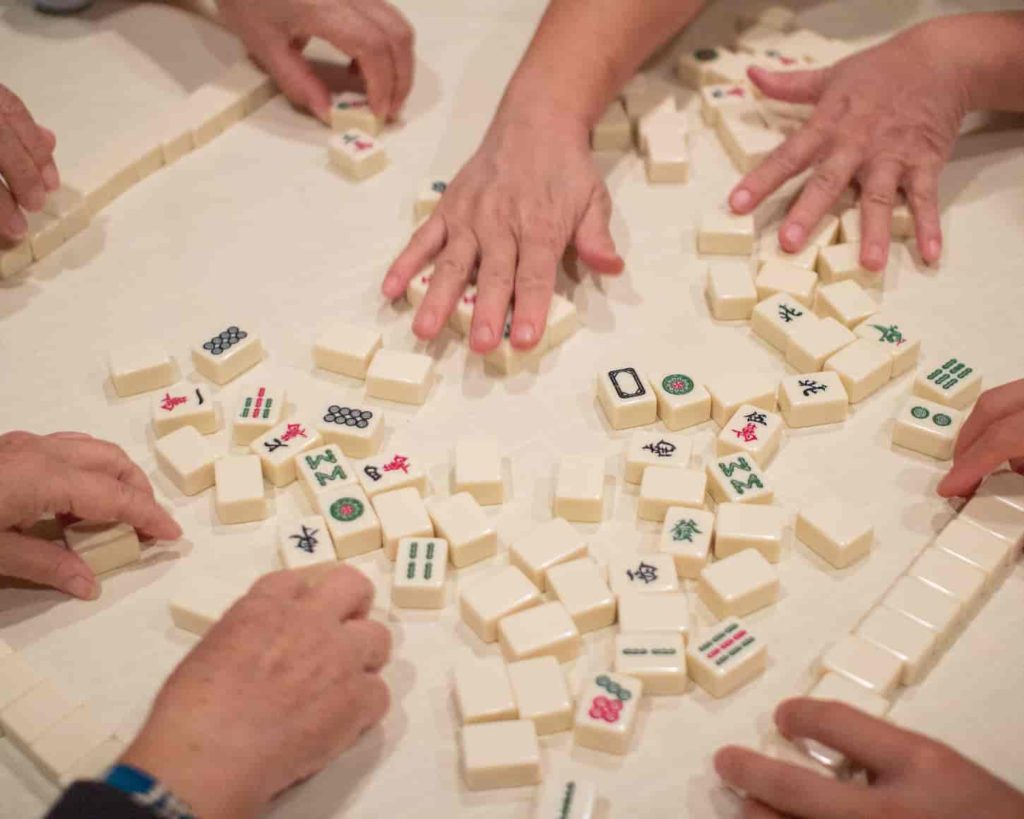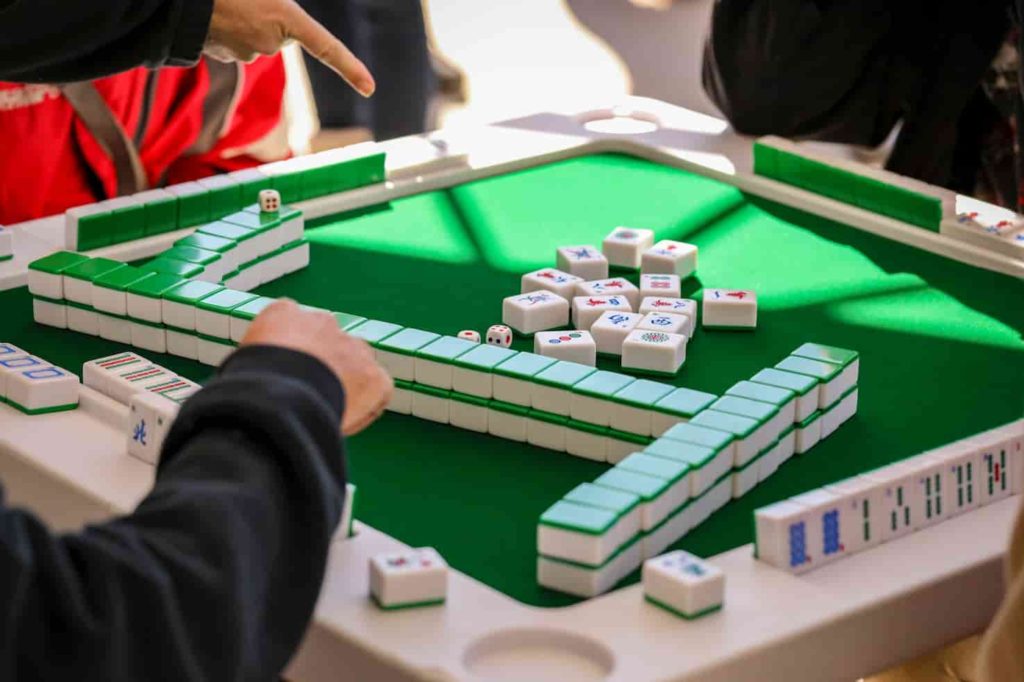Introduction to Mahjong
Mahjong, often referred to as the “game of a hundred intelligences,” is a captivating tile-based game that originated in China during the Qing Dynasty. With its rich history spanning over two centuries, Mahjong has become an iconic part of Chinese culture and has gained immense popularity worldwide. The game is played with a set of 144 intricately designed tiles, each bearing various symbols and characters.
Mahjong is not only a source of entertainment but also an exercise for the mind, requiring strategic thinking and carefully planned moves. It can be enjoyed by people of all ages and backgrounds.
Brief History and Origins of Mahjong
The origins of Mahjong can be traced back to the mid-19th century in China. While its exact origins remain somewhat mysterious, it is widely believed that the game was developed by Confucius himself as a way to teach his disciples important life lessons. Over time, it evolved into a recreational activity enjoyed by people from all walks of life.
Mahjong gained significant popularity in the early 20th century, particularly during the Roaring Twenties when it spread across Asia and eventually reached Western countries like America and Europe. Its appeal lies not only in its intricate gameplay but also in its rich cultural heritage, making it a fascinating pastime for players around the globe.
Overview of Mahjong's Popularity Worldwide
Today, Mahjong has established itself as one of the most popular games worldwide. Its universal appeal can be attributed to several factors: its engaging gameplay that combines strategy with luck, its beautiful and intricate tiles that showcase various themes and artistic styles, and its ability to bring people together for social interaction.
In China alone, millions of people play Mahjong regularly as part of family gatherings, social events, or even in dedicated Mahjong parlors. Beyond China, Mahjong has gained a strong foothold in Asian countries such as Japan and South Korea, where it is often played competitively in tournaments.
Moreover, with the globalization of the game and the rise of online platforms, people from different cultures are now able to connect and enjoy Mahjong together. Furthermore, Mahjong’s popularity has spread to the Western world where it has found a dedicated following.
It is not uncommon to find Mahjong clubs or groups in major cities across Europe and America. Its increasing presence in popular culture through movies, television shows, and video games has further contributed to its global recognition.
Description of the Tiles and Their Symbols
The Mahjong set comprises 144 tiles, each with its own unique symbol or character. These tiles are divided into different categories, each serving a specific purpose during gameplay. The most common material used for these tiles is bamboo, but other materials such as bone or ivory can also be found in traditional Mahjong sets.
The symbols on the tiles are rich in cultural significance and provide insight into the game’s history. The majority of the tiles belong to one of three suits: dots, bamboo (also known as sticks), and characters (also called numbers or characters).
Each suit consists of nine numbered tiles, ranging from one to nine. These suits are further divided into three subcategories: simple suit tiles, honor tiles, and bonus tile sets.
Four Different Types of Tiles
1. Suits: The suits in Mahjong represent numbers or objects and consist of dots (circles), bamboo (sticks), and characters (numbers). They form the backbone of gameplay as players strive to collect sets using these suit tiles.
2. Honors: Unlike suits, honor tiles do not have numerical values but instead represent specific concepts or symbols. There are two types of honor tiles: winds and dragons.
Winds include east, south, west, and north while dragons consist of red (center), green (fortune), and white (soap). These honor tiles hold great strategic importance as they can be used to complete winning combinations.
3. Flowers: Flowers are optional decorative elements found in some Mahjong sets. They have no direct impact on gameplay but contribute to aesthetics during special occasions or social gatherings by adding visual appeal.
4. Seasons: Similar to flowers, seasons serve a purely ornamental purpose in certain variations of Mahjong games. They are often represented by symbolic illustrations or characters associated with the four seasons: spring, summer, autumn, and winter.
Introduction to the Joker Tiles
Joker tiles are not commonly found in all variations of Mahjong but are a prominent feature in some. These tiles serve as wildcards and can be used to substitute any other tile during gameplay.
Jokers provide flexibility and open up opportunities to form winning combinations that might otherwise be unattainable. In games that include jokers, they are usually distinct from the regular tiles in appearance to avoid confusion.
This is typically achieved by using a different color or design for the joker tiles. It’s essential to familiarize yourself with the specific rules of the Mahjong variation you’re playing to understand how jokers function within that particular game.
Understanding the composition and symbolism of Mahjong tiles is crucial for beginners aiming to grasp the game’s intricacies. By recognizing and comprehending these different types of tiles—suits, honors, flowers, seasons—and being aware of potential wildcard elements such as jokers, players can embark on their Mahjong journey equipped with a solid foundation for success.
Setting Up a Game of Mahjong
Detailed Instruction on How to Shuffle and Stack the Tiles
Before diving into the intriguing world of Mahjong, it is crucial to have a proper understanding of how to shuffle and stack the tiles. Begin by placing all the tiles face down on the playing surface, ensuring they are well mixed. With gentle movements, use both hands to shuffle the tiles thoroughly, being careful not to reveal any tile faces.
This process should be repeated at least three times for an optimal mix. Once shuffled, it’s time to stack or build the wall.
The wall consists of two rows of tiles placed in a square shape in front of each player. Starting from one side, align 18 tiles horizontally in front of you.
Repeat this process until you have four walls consisting of 18 stacks each, forming a square shape around the playing area. Note that if there are fewer than four players, some walls will remain empty.
How to Determine Seating Positions and Wind Directions
In Mahjong, seating positions and wind directions play a significant role in gameplay and scoring. To determine seating positions initially, each player randomly picks a “wind” tile from the wall without revealing it to others. These wind tiles represent east (dong), south (nan), west (xi), and north (bei).
The player who draws east becomes the dealer or banker for that round. After establishing seating positions through wind tiles, players sit accordingly based on their chosen winds—east occupying the main seat facing south while other players align themselves in clockwise order based on their respective winds: south facing east, west facing north, and north facing west.
Dealing the Initial Hand and Building the Wall
With seating positions determined and winds assigned, it’s time to deal out an initial hand for each player while building the remaining tiles into a wall. As the dealer, you begin by rolling the dice to decide where to start dealing from the wall.
Count along the wall, starting from your designated player’s right side. The number rolled on the dice determines how many tiles to skip before distributing each player’s initial hand.
Starting from this determined position, each player receives 13 tiles face down, one at a time in clockwise order until everyone has their full hand. Once completed, players must arrange their tiles in an organized manner for easy visibility and accessibility during gameplay.
Meanwhile, as players receive their initial hands, you continue building the rest of the tiles into a solid wall by pushing them together tightly. This ensures that none of the tile faces are visible to any player.
The fully built wall should resemble a rectangle or square shape around the playing area. Now that we have set up our Mahjong game with shuffled and stacked tiles, determined seating positions with wind directions, dealt out initial hands, and built a sturdy wall of hidden tiles—our journey into mastering this captivating game can truly commence!
Basic Rules of Mahjong Gameplay
How Turns are Taken in Mahjong
In a game of Mahjong, turns are taken in a clockwise manner around the table. Each player must wait for their turn before making any moves.
The player who is currently taking their turn has the option to draw a tile from the wall or pick up a discarded tile from the previous player. This decision is crucial as it determines the tiles available for building sets and completing a winning hand.
Drawing a Tile From the Wall or Picking Up a Discarded Tile
When it’s your turn, you have two options for obtaining new tiles: drawing from the wall or picking up a discarded tile. To draw from the wall, you simply take one tile from either end of the wall, without looking at it, and add it to your hand.
This allows you to have more possibilities when building your sets. On the other hand, if you choose to pick up a discarded tile, you must clearly state which tile you are taking and where it came from (the player’s name and location of discard).
However, there is an important rule to consider: when picking up a discarded tile, you can only use it immediately to complete a meld (a set or run) with two other tiles of similar type. If not used instantly in this way, the picked-up tile must be placed face-down in your hand until its potential use arises.
Making Sets: Melds, Pungs, Kongs, Chows
Making sets is an integral part of Mahjong gameplay. A set consists of three or four tiles that form either a pung (three identical tiles), kong (four identical tiles), or chow (three consecutive tiles within the same suit). Melding involves adding these sets to your hand during your turn.
Pungs, kongs, and chows can be made by either using tiles you have drawn from the wall or picking up a discarded tile. It’s important to note that when you make a meld with a discarded tile (except for chow), you must expose it face-up on the table for all players to see.
This allows opponents to track the tiles that might complete your hand. However, if you choose to build a chow from a discarded tile, it remains concealed in your hand since it is formed by adding only one tile from another player.
Discarding Unwanted Tiles
After selecting a tile and making any necessary set formations, players must discard one unwanted tile face-up in the center of the table. This discarded tile becomes available for other players to pick up during their turns. The choice of which tile to discard requires careful consideration, as it can impact both your own strategy and potentially aid or hinder opponents.
When discarding a tile, it’s crucial not to reveal any hints about your hand’s composition or potential winning sets. Remaining mindful of what others might need and minimizing the information given away are key aspects of successful gameplay.
Declaring "Mahjong"
When you manage to form a complete hand with all required sets (melds) and one pair (two identical tiles), you can declare “Mahjong.” This signifies that your hand is ready for scoring and signals the end of the round. To declare “Mahjong,” you must clearly state your intent and then reveal your entire hand, laying it face-up on the table for everyone to inspect.
Other players have an opportunity at this point to challenge your declaration by claiming they possess a higher-scoring hand themselves. If challenged successfully, their higher-scoring hand takes precedence, and they become the winner instead.
However, if no challenges arise after declaring “Mahjong,” you become the winner of the round. The scores are then calculated, and a new round may begin with the tiles being reshuffled and redistributed.
Understanding Scoring in Mahjong
Basic Scoring Principles
Scoring is an integral part of Mahjong and understanding how it works is crucial for players to gauge their progress and compete effectively. In Mahjong, scoring is based on a point system that rewards specific combinations of tiles.
The fundamental principle behind scoring is the accumulation of “fans,” which are units used to determine the final score. The more fans a player accumulates, the higher their score will be at the end of the game.
Fan System: Counting Points
In Mahjong, fans are earned through various combinations of tiles called “sets.” There are numerous sets that can be formed during gameplay, each corresponding to a different number of fans and points. Some common sets include Pungs (three identical tiles), Kongs (four identical tiles), Chows (three consecutive tiles within the same suit), and Eyes (two identical tiles).
Each set has a fixed number of fans associated with it, which contribute to the final score when achieved. Additionally, some special tile combinations can result in more significant point gains.
For example, if a player forms a combination called “Four Concealed Pungs,” where they have four concealed pungs in their hand without exposing any sets throughout the game, they can achieve an increased number of fans. These special combinations add layers of complexity to scoring in Mahjong and require strategic thinking to maximize point gains.
Scoring Elements: Doubles, Limit Hands, Patterns
To further enhance scoring intricacies, Mahjong incorporates additional elements that influence point calculations. One such element is doubles or multipliers—a mechanism used to amplify scores based on specific conditions met during gameplay.
Doubles can be awarded for factors such as winning with certain types of hands or fulfilling particular criteria during the game. Limit hands, on the other hand, are unique patterns or combinations that have predetermined high scores.
These hands are more challenging to obtain but offer substantial rewards if achieved. Examples of limit hands include “Thirteen Orphans,” which consists of having one of each terminal and honor tile in a winning hand, and “Four Kongs,” which requires obtaining four kongs in a single hand.
Scoring Examples
To provide a clearer understanding of how scoring works in Mahjong, here are a few examples:
Example 1: Player A has three pungs (9 fans), two chows (3 fans), and an eye (1 fan) in their hand. This combination grants them a total of 13 fans.
Example 2: Player B forms a “Seven Pairs” pattern with seven pairs of identical tiles, earning them 12 fans.
These examples demonstrate how different combinations contribute to scoring based on the fan system. By recognizing these patterns and understanding their corresponding point values, players can strategically aim for specific sets to bolster their scores as they play Mahjong.
Strategies for Winning at Mahjong
Tips on Hand-Building Strategies
When it comes to Mahjong, one of the most crucial aspects of the game is constructing a winning hand. To increase your chances of success, it is important to employ effective hand-building strategies. One key element in this process is recognizing valuable tiles.
These tiles are ones that have a higher likelihood of completing specific sets or combinations. For instance, keeping an eye out for dragon tiles (red, green, and white) can be advantageous as they are commonly used in many winning hands.
Additionally, identifying honor tiles such as winds (east, south, west, and north) can provide an opportunity to build sets or sequences. Another strategy for hand-building in Mahjong involves identifying potential winning hands early on in the game.
This requires a deep understanding of different scoring patterns and combinations. Familiarize yourself with common winning hands such as “Pung-Pung Kong” or “All Pungs,” as these can guide your decision-making process when choosing which tile to discard or pick up from the wall.
By recognizing potential winning hands promptly, you can adjust your strategy accordingly and work towards achieving those combinations. Adjusting your strategy based on opponents’ discards is imperative in Mahjong gameplay.
Pay close attention to what tiles other players are discarding as it may reveal their intended hand composition or give insight into which suits they are focusing on. This information allows you to make informed decisions about which discarded tile could potentially complete your own sets or hinder your opponents’ progress.
Advanced Strategy Based on Opponents' Discards
In the intricate game of Mahjong, being observant of your opponents’ discards can significantly impact your strategic decisions throughout gameplay. The discarded tiles provide valuable information about their intentions and preferred suits — a crucial aspect when formulating your own strategy. By paying close attention, you can adjust your gameplay to both capitalize on opportunities and thwart your opponents’ progress.
When an opponent discards a certain tile, consider whether it could be useful for completing any of your sets or sequences. If a discarded tile matches one of the tiles you need, it might be beneficial to claim it for yourself and utilize it in your hand-building process.
However, be cautious not to reveal too much about your own hand when doing so, as savvy opponents may catch on and adapt their strategy accordingly. Similarly, observing the frequency at which certain tiles are discarded can provide insights into your opponents’ preferred suits or combinations.
Suppose a particular suit is being heavily discarded by multiple players. In that case, it may be prudent to avoid focusing on that suit in order to reduce competition for those tiles and increase the likelihood of successfully completing other sets.
Remember that adjusting strategy based on opponents’ discards requires attentiveness and adaptability throughout the game. Analyzing patterns and understanding rival players’ tendencies will enable you to make calculated decisions that give you an edge in building a winning hand in Mahjong.
Overview of Popular Mahjong Variations
Mahjong is a game that has spread far and wide, leading to the development of various regional variations with their own set of rules. Understanding these differences can enhance your appreciation for the game and allow you to adapt your strategy accordingly. One popular variation is Chinese Classical Mahjong, which is considered the most traditional form of the game.
In this version, there are no joker tiles, and players can only win by drawing their winning tile themselves. Chinese Classical Mahjong also places great importance on calculating scores based on predetermined combinations known as “fan.” This requires players to carefully plan their hands in order to maximize their potential points.
Another widely played variation is Riichi Mahjong, which originated in Japan and has gained popularity worldwide. Riichi Mahjong introduces several unique elements such as the use of dora indicators, which are special tiles that increase the value of specific sets.
Additionally, players must declare “riichi” when they are one tile away from completing a winning hand, which adds an extra layer of excitement and strategic decision-making to the gameplay. The scoring system in Riichi Mahjong is also different from other variations, with emphasis on yaku (specific patterns) that contribute to point calculations.
On the other side of the globe, we have American Mahjong—a variation that has evolved over time due to Western influences. American Mahjong utilizes a different set of rules compared to its Asian counterparts.
It incorporates additional tiles like joker tiles and introduces new mechanics such as Charleston—a pre-game trading phase where players exchange unwanted tiles. The scoring system in American Mahjong takes into account both individual hand values and cumulative scores across multiple rounds.






